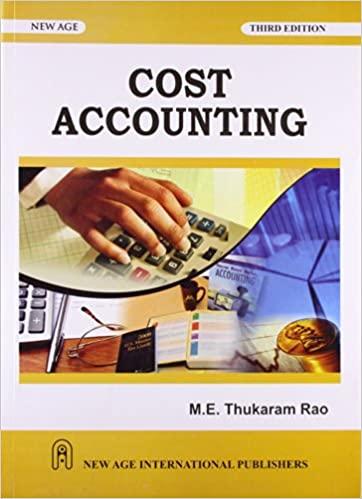Question
Molly Blue and two friends from law school recently formed Blue and Associates as a limited liability partnership (LLP). The income generated from the partnership
Molly Blue and two friends from law school recently formed Blue and Associates as a limited liability partnership (LLP). The income generated from the partnership will be split equally among the partners. The partnership will generate fee income primarily from personal injury cases. While some attorney friends have suggested that the partners earnings will be self-employment income, other attorneys they know from their local bar association meetings claim just the opposite. After examining relevant authority, draft a research memo following the format in Exhibit 2-9 on page 2-20 of your textbook detailing the facts, issue, authorities consulted, conclusion, and analysis.
{Hint: See 1402(a)(13) and Renkemeyer, Campbell & Weaver LLP v. Commissioner, 136 T.C. 137 (2011))
AN EXAMPLE OF WHAT NEEDS TO BE DONE (FOLLOW 2018 RULES)
| Below is the memo Bill and Mercedess CPA drafted after researching their issue. | |
| Date: | July 8, 2018 |
| Preparer: | Joe Staff |
| Reviewer: | Sandra Miller |
| Subject: | Deductibility of Points Paid in Refinancing |
| Facts: | Four years ago Bill and Mercedess credit union provided them a $250,000 mortgage loan for their new home. The mortgage loan was a four-year interest-only note with a balloon payment at the end of four years. Bill and Mercedes (Floridians residing in the 11th Circuit) chose this type of loan to allow them to minimize their mortgage payment until their other house was sold. After 18 months, Bill and Mercedes sold their other house and refinanced their original short-term loan with a 15-year conventional mortgage. The credit union charged Bill and Mercedes $3,000 in points (prepaid interest) upon the refinancing. |
| Issue: | Can Bill and Mercedes deduct the points in the year they paid them? |
| Authorities: | IRC Sec. 461(g). |
| Rev. Rul. 87-22, 1987-1 CB 146. | |
| J.R. Huntsman v. Comm. (8 Cir., 1990), 90-2 USTC par. 50,340, revg 91 TC 917 (1988). | |
| AOD 1991-002. | |
| P.G. Cao v. Comm. (9 Cir., 1996), 96-1 USTC par. 50,167, affg 67 TCM 2171 (1994). | |
| Conclusion: | Because Bill and Mercedess refinancing represents an integrated step in securing permanent financing for their home, substantial authority supports their deduction of the $3,000 in points this year. |
| Analysis: | IRC Sec. 461(g)(1) provides that cash-method taxpayers (Bill and Mercedes) must amortize prepaid interest (points) over the life of the loan instead of receiving a current deduction. IRC Sec. 461(g)(2) provides an exception to the general rule of Sec. 461(g)(1). Specifically, IRC Sec. 461(g)(2) allows cash-method taxpayers to deduct points in the year paid if the related debt was incurred in connection with the purchase or improvement of, and secured by, the taxpayers principal residence. The question whether Bill and Mercedes should amortize or currently deduct the points paid to refinance the mortgage on their principal residence depends upon the interpretation of in connection with the purchase or improvement of found in IRC Sec. 461(g)(2). |
| There are two basic interpretations of in connection with the purchase or improvement of. In Revenue Ruling 87-22, the IRS rules that points incurred in refinancing a mortgage on a taxpayers residence are deductible in the year paid to the extent that the taxpayer uses the loan proceeds to improve the taxpayers residence. Thus, points paid to simply refinance an existing mortgage without improving the residence must be amortized over the life of the loan. | |
| In contrast, in J.R. Huntsman v. Comm., the 8th Circuit Court interpreted the phrase in connection with the purchase or improvement of much more broadly and held that points incurred to refinance a mortgage on the taxpayers principal residence are currently deductible if the refinancing represents an integrated step to secure permanent financing for the taxpayers residence. The facts in J.R. Huntsman v. Comm. are very similar to Bill and Mercedess facts. Like Bill and Mercedes, the taxpayers in J.R. Huntsman v. Comm. also purchased their principal residence using a short-term loan with a balloon payment. When the balloon payment came due, the taxpayers obtained a permanent mortgage on their home (a 30-year conventional mortgage). The 8th Circuit Court held that in this case the permanent mortgage was acquired to extinguish the short-term financing and finalize the purchase of the home. Thus, where taxpayers purchase a principal residence with a short-term three-year loan secured by a mortgage on the residence, and replace the loan with permanent financing . . . , the permanent mortgage obtained is sufficiently in connection with the purchase of the home to fall within the exception provided for by section 461(g)(2). | |
| In Action on Decision 1991-002, the IRS has indicated that it will not follow the J.R. Huntsman v. Comm. decision outside the 8th Circuit (in the 11th Circuit where Bill and Mercedes live). Nonetheless, other courts (the 9th Circuit in P.G. Cao v. Comm.) have indicated a willingness to apply the 8th Circuits interpretation of IRC Sec. 461(g)(2). That is, they have allowed deductibility of points incurred in refinancing if the refinancing occurred to secure permanent financing, instead of for some other reason such as to secure a lower interest rate. | |
| Given the similarity in facts between Bill and Mercedess refinancing and those in J.R. Huntsman v. Comm. (refinancing of a short-term note to secure permanent financing), substantial authority supports a current deduction of the points paid. | |
Step by Step Solution
There are 3 Steps involved in it
Step: 1

Get Instant Access to Expert-Tailored Solutions
See step-by-step solutions with expert insights and AI powered tools for academic success
Step: 2

Step: 3

Ace Your Homework with AI
Get the answers you need in no time with our AI-driven, step-by-step assistance
Get Started


